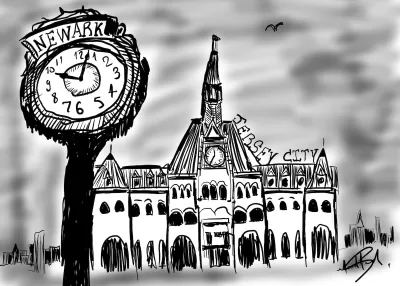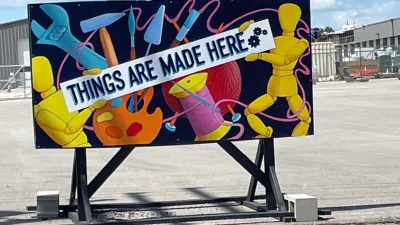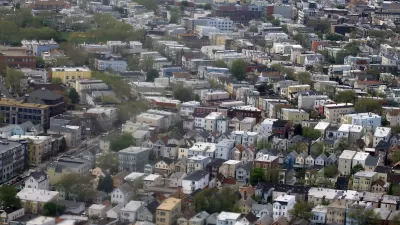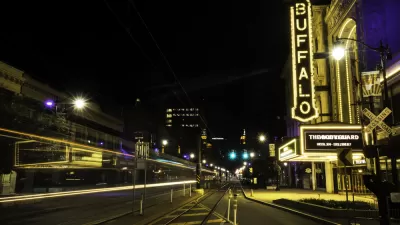The rise and fall (and rise again) of two great American cities teach us lessons about racism, economic opportunity, and more.

Anyone who has ever walked through the Jersey City and Newark waterfronts can probably attest that they are very different experiences. In Jersey City’s case, you have an incredible outdoor stroll. A wide, stone-paved, tree-lined path next to the Hudson makes you feel comfortable while walking while the amenities nearby will keep you busy. On the other hand, Newark’s waterfront consists of a narrow sidewalk on a small stretch of the Passaic River in the middle of the city’s waterfront. On the north end, the waterfront is blocked from the rest of the city due to NJ-Route 21; in the south, the waterfront belongs to the back alleys of office buildings and warehouses. This contrast symbolizes the current state of both cities. One signals prosperity, while the other one shows deterioration. This was not always the case. There was a time when Newark was not only a prosperous city but part of the backbone of America.
Newark’s urban history is fascinating. It was founded in 1666 by Connecticut’s colonists looking to establish a strict Puritan theocracy. They arrived at the valleys of what was to become one of the most important cities of the American industrial era. The young city grew and naturally became a desirable location for manufacturers and industry due to its convenient site near major waterways such as the Passaic River. By the mid-19th century, the Industrial Revolution had arrived in Newark and with it, an industrial boom. Newark was now a vibrant hub of activity, the city's streets echoing with the sounds of workers in leather factories and the aroma of breweries. At the same time, the Industrial Revolution was changing transportation across America forever. With the national effort to build railways and canals, the country would soon be unified by powerful steam locomotives and ships. Newark was ahead of the game, as it had already started the construction of key projects such as the Morris Canal and various railroads in the 1830s. All of this made the city into a bustling port city with a prominent local industry—Newark was now on the map.
Jersey City was founded by the Dutch around 1660, but with a different ideology. Religious freedom was one of the main pillars of the city, unlike the strict theocracy initially put in place in Newark. Famous characters such as Alexander Hamilton were said to have contributed to the early development of the city. Mr. Hamilton supposedly created the grid of downtown Jersey City. Around the same time Newark started gaining traction, Jersey City was getting some part of the pie too. With a strategic location across the Hudson, near New York City, the Morris Canal, and Ellis Island, Jersey City had all the ingredients to become a significant transportation hub in the region. Thus, due to a round of investments around the early 1800s and the booming Industrial Revolution, the small metropolis soon became an important player in the region. Ellis Island, being around the corner, supplied Jersey City with a diverse workforce, attracting even more immigrants in the future. A few decades later Jersey City would make a name for itself as a part of industrial America.
But as fast as the revolution came, the revolution left. Once-thriving cities became decaying wastelands. World War II, the popularization of the motor vehicle, the bankruptcy of the railroads, systematic racism, the increasing popularity of single-family home suburbs, and the repositioning of industry from cities to surrounding areas around the mid-20th century created the perfect storm for the fall of many of these cities. It happened in Detroit, Atlanta, and St. Louis, and it happened in Newark and Jersey City too.
World War II changed urban dynamics. Due to the war, there was a halt in housing construction for more than a decade. And due to the explosion in population known as the baby boom, demand for housing was as big as ever. At the same time, motor vehicles were increasing in popularity all around the United States. According to the Federal Highway Administration, automobile registrations in New Jersey increased from 16,160 in 1910 to 1,352,681 in 1950. In other words, in only 40 years the registration for private motor vehicles exploded by 8370%. These two factors paved the path to the proliferation of single-family, car-dependent suburbs for hundreds of thousands of new families in need of a home.
This changed the amount of money that went from cities to suburbs, neglecting the maintenance of these great urban places. Motor vehicles increased mobility, which meant people and goods could now travel farther away. This in turn caused the repositioning of many industries from dense cities to surrounding areas. Trucks facilitated logistics and delivery of goods. Now, factories and manufacturers did not need to be close to their clientele anymore, so they could move away in order to save money. According to a citation of the Rise Up North: Newark website in an article on NJ Spotlight News, “the city (Newark) began hemorrhaging jobs, with 250 manufacturers leaving between 1950-1960 and another 1,300 leaving during the 1960s.” Consequently, thousands of people lost jobs and were left on the streets.
Simultaneously, banks and other institutions withheld mortgages from people of color and ethnic communities in a practice known today as redlining which was put into practice in Newark as early as the 1930s. The demographics of Newark—previously a predominantly white town—started to change rapidly. According to U.S. Census Bureau Data, the increase in the population of African Americans in Newark between 1910 and 1940 happened in part due to the “first great migration” of Black Americans from the American South, when people were looking for employment opportunities in the prospering northeastern industrial cities. This prompted the first instances of a phenomenon later known as ‘white flight.’ Despite the African American population being free citizens of the United States, some white citizens still resented integration. Support for segregation was still alive, and when cities started to demographically diversify, some decided they would not be part of it. This wish was only made stronger with the development of motor vehicles and detached single-family homes. Escaping from cities to surrounding demographic bubbles had never been easier.
Jersey City did not escape industrial decline. It got hit hard too, and what were once prosperous and busy waterfront factories were soon abandoned piers. The perfect storm that hit other American cities finally hit Jersey City as well. According to a Shelterforce article by Assistant Professor of Sociology at St. Peter’s University, Donal Malon, “Between 1950 and 1992, the number of manufacturing jobs in Jersey City went from almost 40,000 to less than 10,000.” This decrease affected the community greatly, and, just as in Newark, thousands of individuals lost their livelihoods. This likely contributed to the decrease in population from approximately 300,000 in the 1950s to 223,552 in the 1980s—a loss of approximately 26 percent of the population in only 30 years.
Once a bustling hub of transportation in Liberty State Park, the Central Jersey Station became a relic of a prosperous past. According to an article in the New York Times by Anthony DePalma, around the late 1950s “One by one, the aging railroads, unable to compete with buses and cars for the thousands of New Jersey commuters, declared bankruptcy.” The America that was built on trains was gone, and the motor vehicle era had started. The Central Jersey Station finally came to an end on April 30, 1967. Jersey City was not the industrial node of transportation it used to be anymore. Now, it was merely a shadow of what it once was.
While Newark remains the most populous city in the Garden State as of 2021, Jersey City is experiencing a more robust recovery. Newark is still working towards reclaiming its status as the vibrant metropolis it once was. When analyzing the reasons for Jersey City’s current success, we need to understand what happened right after its industrial decline.
Despite being in ruins, Jersey City still had good bones. With several PATH stations passing through the city, and an incredible location with a Manhattan view, Jersey City had the ingredients to become a great American City once again. In the 1980s, a group of developers saw the abandoned rail yards and empty buildings across from the Big Apple as an incredible investment opportunity. One of the first buildings to rise from the ashes of the railroad yards was 10 Exchange Place in 1988. The 30-story luxury building with 740,354 square feet of space soon became the tallest building on the waterfront, providing a glance at what the future could be. Investments kept coming, and in the 1990s, another taller building was built: 101 Hudson. In 2004, one of the most famous iconic towers was erected in Jersey City: the 42-story, 780-foot-tall Goldman Sachs tower. In just three decades, Jersey City’s waterfront once again had a total makeover.
This change in the urban state of Jersey City can be seen in an interview conducted by the New York Times in the year 2000. “‘You should see the view in the evening when the setting sun reflects off the skyline and my white kitchen turns gold,’' said Mr. Hartnett. ‘It's spectacular.’” And so it was. From preindustrial land to industrial prosperity, then from decadence to modern progress.
The Newark case is more complicated than its waterfront neighbor. While both cities suffered from the aftermath of the industrial era, Newark had more problems. After white flight and decades of disinvesting due to redlining, the industrial mecca was in a bad position. The population continued to decline, and it was only a matter of time before something would trigger a worse crisis. And so it happened in the summer of 1967. The arrest of an African-American cab driver unleashed hell in the city. It could be seen as the drop that overflowed a glass of water that had been slowly filling up over the early part of the 20th century. What happened in July of that year is known today by historians as the riots of Newark, leaving 24 dead and 200 injured.
If, before the 1967 uprisings, public opinion of Newark was not favorable, the riots did nothing to help, hammering the last nail in the city’s coffin. According to the New York Times, the riots “caused about $10 million in damages and reduced entire blocks to charred ruins, some of which remain vacant grass-covered lots.” The damage to the built environment, the first public demonstration of the city’s frustrations, exacerbated conditions in a city already held back by redlining and other practices.
Accordingly, the years following the riots were not the kindest to Newark. While developers eyed Jersey City, Newark struggled to attract new investments. This is why the creation of the New Jersey Performing Arts Center (NJPAC) in the 1980s was seen as an important symbol of change in Newark. As Richard Wener, Ph.D, mentions in his book Placemaking for Change: 2001 Rudy Bruner Award for Urban Excellence, the developers “hoped that a successful project would add prestige to a state caught in the media shadow of New York and Philadelphia and would help overcome the negative image of Newark as a dangerous, riot-torn city” (p.32). NJPAC was an important chapter in Newark’s history. For the first time in a long time, the city was finally getting something good. It felt as if Newark was finally healing.
Today, Jersey City and Newark are both very different from their industrial past selves. They have transformed from decaying, forgotten cities to prosperous places where the future looks brighter than ever. In Jersey City, people and organizations are doing their best to improve the city every day. Recent achievements, such as being one of the only American cities to have achieved Vision Zero, serve as a testament to the great progress made daily. The city is not shy of new investments and developers either. But despite all of the new capital and shiny buildings getting constructed, we can’t forget who really matters at the end. Uncontrolled development might sometimes damage the community itself, making gentrification a threat to the city. On the other hand, Newark has come a long way. Since NJPAC, a new civic spirit formed and change finally came. Historical trends of disinvestment started to become history, and despite the scars of the riots, Newark is swimming against the tide. Recent developments such as the NJPAC Riverfront Campus and the New East Newark Riverfront Park Restoration Project show that Newark is again morphing and becoming stronger by the day.
It’s evident that these cities have shown remarkable resilience. One of them, haunted by decades of financial restraint due to redlining, racism, industrial decline, and social unrest, has had a rough ride. Nevertheless, the ability to stay afloat and progressively improve shows the undying spirit of the city. The other one, facing similar challenges, has experienced a renaissance in all aspects and serves as an example of what the future can look like. Both Newark and Jersey City symbolize the essence of the American city. On one hand, it shows the prosperity and vision undertaken in the conception of these places as modern cities. On the other hand, their decline shows the pitfalls of the historical discrimination and injustice that has harmed these and other American communities. These cities were the building blocks of America’s current prosperity. Yet in most cases, we have not treated them as such.
Fortunately, dreams of a better future never died, and many efforts have been made to once again transform these cities for the better. In my opinion, the future looks bright, and their revitalization —whether slow or fast—is proof of this.

Study: Maui’s Plan to Convert Vacation Rentals to Long-Term Housing Could Cause Nearly $1 Billion Economic Loss
The plan would reduce visitor accommodation by 25,% resulting in 1,900 jobs lost.

North Texas Transit Leaders Tout Benefits of TOD for Growing Region
At a summit focused on transit-oriented development, policymakers discussed how North Texas’ expanded light rail system can serve as a tool for economic growth.

Why Should We Subsidize Public Transportation?
Many public transit agencies face financial stress due to rising costs, declining fare revenue, and declining subsidies. Transit advocates must provide a strong business case for increasing public transit funding.

How to Make US Trains Faster
Changes to boarding platforms and a switch to electric trains could improve U.S. passenger rail service without the added cost of high-speed rail.

Columbia’s Revitalized ‘Loop’ Is a Hub for Local Entrepreneurs
A focus on small businesses is helping a commercial corridor in Columbia, Missouri thrive.

Invasive Insect Threatens Minnesota’s Ash Forests
The Emerald Ash Borer is a rapidly spreading invasive pest threatening Minnesota’s ash trees, and homeowners are encouraged to plant diverse replacement species, avoid moving ash firewood, and monitor for signs of infestation.
Urban Design for Planners 1: Software Tools
This six-course series explores essential urban design concepts using open source software and equips planners with the tools they need to participate fully in the urban design process.
Planning for Universal Design
Learn the tools for implementing Universal Design in planning regulations.
Ascent Environmental
Borough of Carlisle
Institute for Housing and Urban Development Studies (IHS)
City of Grandview
Harvard GSD Executive Education
Toledo-Lucas County Plan Commissions
Salt Lake City
NYU Wagner Graduate School of Public Service






























